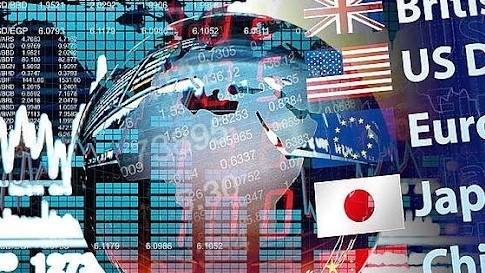Assessing the world economic outlook for 2022, analysts said that, despite many difficulties ahead, there are still bright hopes of optimism. The economic recovery momentum in 2021 will continue to be consolidated this year as countries maintain growth stimulus and gradually remove bottlenecks in their supply chains.
The leading economies heading the world's growth, continued to recover positively. In which, the US is forecasted to grow by about 4%, after 2021 has achieved the fastest growth rate of Gross domestic product (GDP) since 1984. Economic experts expect this strong recovery trend will help the US heal most of the "economic wounds" caused by the epidemic. Growth in the Eurozone is forecasted to reach 4.2% this year. Japan is also forecasted to accelerate in 2022 thanks to the recovery of personal consumption and increased export turnover. In a report released last week, the Japanese government forecasted the country's real GDP will grow by 2.6% in fiscal 2021, ending in March 2022 and 3.2% in fiscal 2022.
Along with the growth in leading economies accelerating, experts said that the RCEP, consisting of 15 member countries in the Asia-Pacific region, has come into force from January 1, 2022, will also create a "new wind" to promote the recovery of the regional and global economy.
This agreement moves to eliminate tariffs on more than 90% of goods, expand market access for investors, regulate customs procedures, establish common principles for the development of e-commerce and business development.
Accordingly, RCEP is considered to be a catalyst to help expand investment and trade in the region. The United Nations Conference on Trade and Development, recently said that RCEP will create a new “centre of gravity” for global trade and help boost the region's exports by 42 billion USD.
Facing the above positive signals, the International Monetary Fund (IMF) has just said optimistically that the world economic growth in 2022 can reach 4.9%. It is forecasted that the total value of the world economy in 2022 will surpass the threshold of 100 trillion USD, the first time in history and two years earlier than the previous forecast.
However, besides these positive signals, the world economy in 2022 still faces "poisonous winds". Accordingly, worries about new variants of the SARS-CoV-2 virus and inflationary pressure are still risks that can slow down the growth process. What has happened in the past two years has shown that the unexpected development of the COVID-19 pandemic can change all forecasts.
The Omicron variant of the SARS-CoV-2 virus spread on a large-scale, in the first days of 2022, which could hinder world economic growth by reducing consumer demand, especially in fields sensitive to the epidemic situation, such as tourism and restaurants.
In addition, the Omicron variant is also increasing the risk of putting the recovering global supply chain at risk of severe disruption, once again.
China's tightening management of international ports and border gates to prevent and control the epidemic has disrupted the circulation of many goods. In the context of increasing demand for goods production and consumption, supply chain disruption is one of the biggest causes of inflation.
JPMorgan Chase, the largest bank in the US, has made a forecast and also an expectation for the global economy: " 2022 will be the year of a full global recovery, an end of the pandemic, and a return to normal economic and market conditions we had prior to the COVID-19 outbreak".
However, in order for this forecast to come true, the international community, governments, businesses and people around the globe must unite and make great efforts in the prevention and control of the COVID-19 epidemic, as well as regulating macroeconomic policies, stimulating economic demand.
















